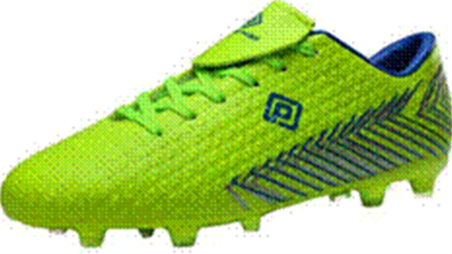Why did the Court of Appeal reverse the Umbro trade mark decision?
- Rosie Burbidge

- Feb 1, 2024
- 3 min read
Updated: Jun 22, 2025

In the season of FA Cup replays, it’s perhaps appropriate that the Court of Appeal has just reversed a ruling concerning trade mark infringement of a well-known football brand.
As we reported in April 2023, the High Court rejected a claim that football boots and other footwear bearing the Dream Pairs logo infringed Umbro’s double diamond trade mark. That decision has now been overturned.
The case concerned two UK trade marks belonging to Iconix. The appeal focused on the 668 mark which is for a series of two devices (pictured).

Iconix complained about the use of the P-like logo pictured, in particular on shoes as shown below. Dream Pairs sells footwear with this logo through the Amazon UK website and on eBay UK.
Errors in reasoning
The first instance ruling that there was no likelihood of confusion between the trade marks and the sign involved a multi-factorial evaluation, so the Court of Appeal could only intervene if there were errors of law or principle. The Court identified the following errors in the first instance judgment:
The judge wrongly found that the P-like form in the middle of the sign was the distinctive and dominant element of the logo, and this was an error of principle because the sign was not a composite sign but a single sign which the Court should consider as a whole without excision or distortion. This was material because it led to an undue focus on what was different in the sign compared to the trade marks.
The judge’s finding that the similarity between the 668 trade mark and the sign when affixed to footwear and when viewed from other angles than square-on was only very faint indeed was rationally insupportable. “When that comparison is made there is plainly a higher degree of similarity between 668 and the Sign,” said Arnold LJ.
When considering the post-sale context, the judge had fallen into error in two respects, said Arnold LJ. The average consumer encountering the sign for the first time affixed to, for example, a pair of football boots worn by someone else would not know what the sign looked like when represented graphically. Nor would they even necessarily know, or find out, what the sign looked like when viewed square-on, as they might well only see it looking down, and therefore at an angle:
“In those circumstances the appearance of the Sign would be foreshortened. Indeed, it could be more foreshortened than in the image relied on by Iconix. Furthermore, the viewer might well not see the Sign side-on, but only from the front or rear. In all of these circumstances the Sign would appear more like a double diamond, and therefore more similar to 668, than in the graphic image. There is nothing artificial or unrealistic about this comparison. On the contrary, it is a realistic and representative scenario for assessing the post-sale impact of the use of the Sign upon the perception of the average consumer.”
Likelihood of confusion
Having reversed these findings, the Court re-evaluated the question of infringement. Taking account all of the factors, including the moderately high level of similarity between the 668 mark and the sign, it found there was a likelihood of confusion on the part of a significant proportion of consumers.
What does this mean?
The judgment is likely to be welcomed by brand owners, particularly for its detailed consideration of the post-sale context.
As Arnold LJ stated:
“It is well established that it can be relevant to take the post-sale context into account when considering trade mark issues, including likelihood of confusion … Thus it is possible in an appropriate case for use of a sign to give rise to a likelihood of confusion as a result of post-sale confusion even if there is no likelihood of confusion at the point of sale.”
In this case, consideration of how a consumer would actually see the sign as used on the product, and specifically the fact that they would see it at an angle and not square-on, was critical to the outcome.
To find out more about the issues raised in this blog contact Rosie Burbidge, Intellectual Property Partner at Howard Kennedy LLP in London - rosie.burbidge@howardkennedy.com





